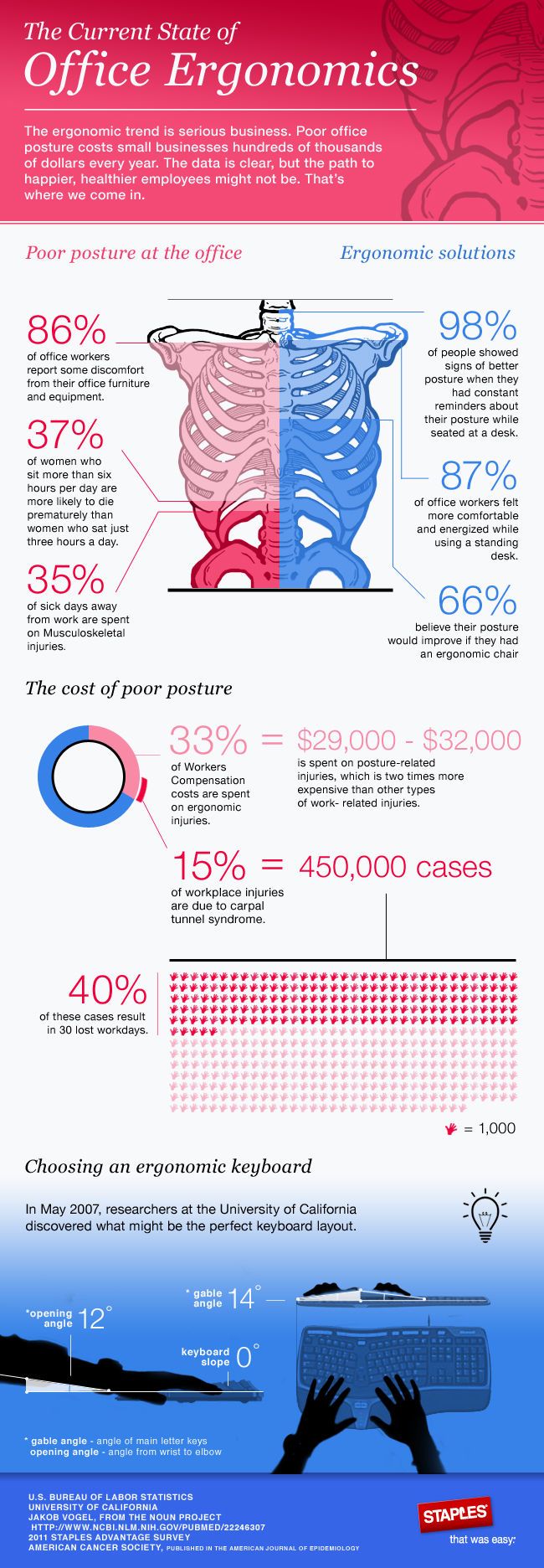Sitting at a desk all day, every day is hard on your body. Poor posture leads to weakening of the core muscles, joint dysfunction, nerve irritation and suboptimal breathing patterns. If you are one of those who have mastered the slouch, you may find it uncomfortable even trying to sit up straight. You have become a creature of your habits. Time for an elevated presence.
Symptoms your laptop is getting the best of you
- neck pain
- headaches
- upper back pain
- lower back pain
- numbness and/or tingling
- elbow and/or shoulder pain
- difficulty breathing deeply
- low energy
- difficulty sleeping
If you want an example of good posture, just look at a young child – their back shows a graceful ‘S’ curve and their movements are easy and effortless. As we get older, bad habits such as slouching and inactivity cause muscle fatigue and tension that ultimately lead to poor posture.
May of us spend more than 4 hours a day hunched over our laptop. You can improve your posture and spinal health immediately by elevating your laptop to a proper height.
READ ALSO: From Crowdfunding to Shipping
Self-Test for Posture Problems
The Wall Test - Stand with the back of your head touching the wall and your heels six inches from the baseboard. With your buttocks touching the wall, check the distance with your hand between your lower back and the wall, and your neck and the wall. If you can get within an inch or two at the low back and two inches at the neck, you are close to having excellent posture. If not, your posture may need professional attention to restore the normal curves of your spine.
The Mirror Test
(Front view) Stand facing a full length mirror and check to see if:
- Your shoulders are level
- Your head is straight
- The spaces between your arms and sides seem equal
- Your hips are level, your kneecaps face straight ahead
- Your ankles are straight
(Side View) This is much easier to do with the help of another, or by taking a photo.
Check for the following:
- Head is erect, not slumping forward or backwards
- Chin is parallel to the floor, not tilting up or down
- Shoulders are in line with ears, not drooping forward or pulled back
- Stomach is flat
- Knees are straight
- Lower back has a slightly forward curve (not too flat or not curved too much forward, creating a hollow back).
The 'Jump' Test - Feel the muscles of your neck and shoulders. Do you find areas that are tender and sensitive? Are the buttock muscles sore when you apply pressure? What about the chest muscles?
Improving your posture
When standing - hold your head high, chin firmly forward, shoulders back, chest out, and stomach tucked in to increase your balance. If you stand all day in a job like a cashier or clerk, rest one foot on a stool or take breaks to get off your feet for a while.
When sitting - use a chair with firm low back support. Keep desk or table top elbow high, adjust the chair or use a footrest to keep pressure off the back of the legs, and keep your knees a little higher than your hips. Get up and stretch frequently--every hour if you sit for long periods of time. Do not sit on a fat wallet; it can cause hip imbalance!
When working on a computer - ROOST UP - take a one or two minute task break every 20 minutes when you work at a computer screen. Place reference materials on a copy stand even with and close to the terminal.
When sitting in the car - adjust the seat forward so your knees are higher than your hips. Put a small pillow or cushion in the small of your back.
When sleeping - sleep on your side with your knees bent and head supported by a pillow, to make your head level with your spine. Or, sleep on your back, avoiding thick pillows under your head. Use a small pillow under your neck instead. Don't sleep on your stomach.
When lifting - let your legs do the work in order to prevent injury to your low back. Stand close to the object, then where possible squat down and straddle it. Grasp the object, and slowly lift the load by straightening your legs as you stand up. Carry the object close to your body.
When bending - never twist from the waist and bend forward at the same time. To lift or reach something on the floor, bend the knees while keeping the back straight.


